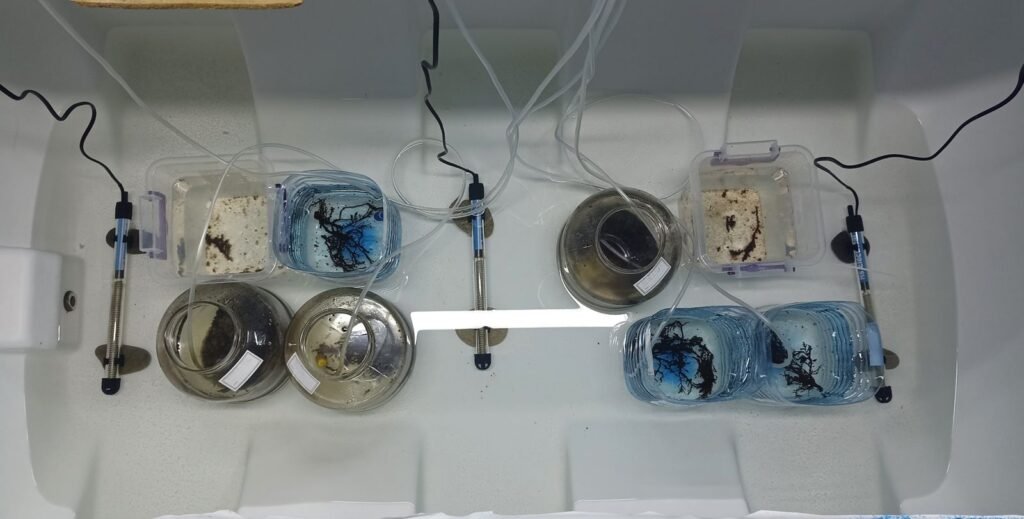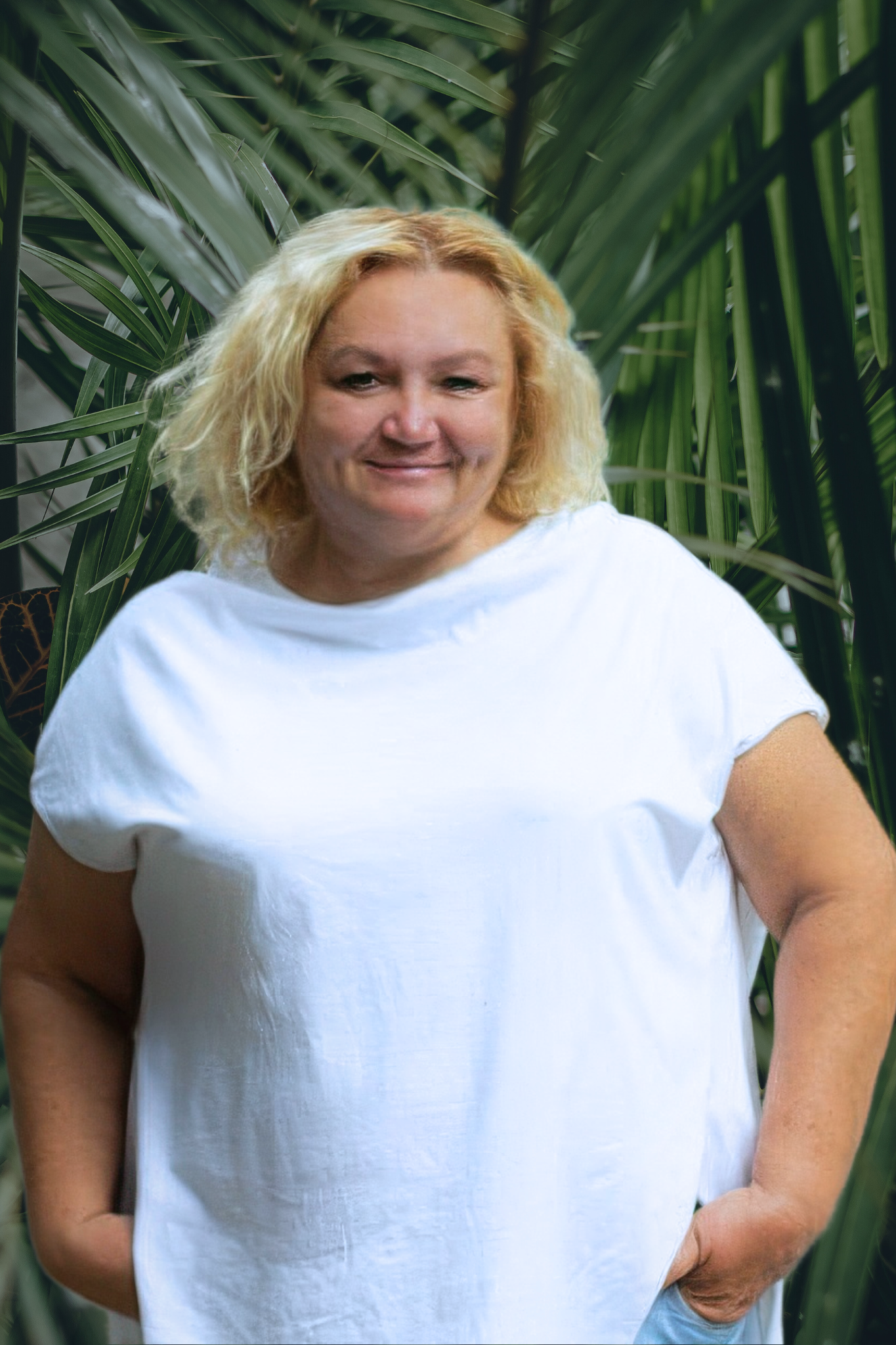Brown algae Cystoseira barbata helps clean up the sea from oil pollution
However, along with microorganisms, algae play an important role in the ecological balance of marine ecosystems, and their participation in cleaning the sea from oil products is associated with both mechanical and biological processes. As a result of contact with oil products, algae can serve as “filters”, reducing the spread of oil on the water surface and trapping particles in the coastal zone. Scientific studies have shown that brown algae are able to absorb and retain oil and oil product particles on their surface due to the presence of mucous membranes and the complex structure of plant tissues. Some species of brown algae contain enzymes and metabolites capable of participating in the degradation of certain oil components.
It should also be pointed out that brown algae create an environment for the development of microorganisms on their surface, including oil-oxidizing bacteria, thus enhancing and accelerating the natural cleaning process. They stimulate the growth of oil-oxidizing bacteria through the enzymes and nutrients they secrete. Due to this property, brown algae are used in bioremediation measures, while increasing the contact area between petroleum products and microorganisms.
KELP FARMS conducted a scientific study on the role of brown alga Cystoseira in the uptake and deposition of M-100 fuel oil fractions in the Black Sea. An “acute” toxicological experiment with high concentration of oil pollution, 65-70 times higher than MAC, was conducted in laboratory conditions. Fuel oil collected on sandy beaches of Anapa city, the most affected by the accident spill, was used. It should be noted that fuel oil M-100 is a heavy oil fuel used in power engineering and shipping, containing high concentrations of heavy hydrocarbons and substances potentially harmful to the environment. In practice, there are no regulations for M-100 fuel oil, but there are MPCs for heavy hydrocarbon fractions that are part of M-100 fuel oil. For example, in sea water concentrations of such dissolved heavy petroleum hydrocarbons as C10-C40 should not exceed 0.1-0.5 mg/l.
During 30 days the condition of control samples of Cystoseira and plants in tanks with fuel oil was monitored.

Experimental setup
A noticeable decrease in petroleum hydrocarbon concentration was observed on day 21 and it continued till the end of the experiment. The results showed that the dissolved petroleum fractions content decreased by 82% in the tanks with fuel oil and cystosira.
Changes in the appearance and weight of Cystoseira branches were also observed during the study. After 11 days, a change in the coloration of algae in the experiment compared to control samples was recorded, and on 21 days the initial stages of destruction of plant branches were observed. In clean seawater, growth of Cystoseira was observed and the biomass increased from 14 to 35%, while oil pollution caused drastic weight loss of algae by 12.8, 27.1 and 39.1%.
Further chromatographic analysis showed that the maximum amount of petroleum hydrocarbons was deposited on the surface of Cystoseira branches. Our data confirmed the fact that brown algae are involved in cleaning the sea from petroleum products by their deposition and accumulation on their surfaces, but quantitative data were obtained for the first time. Deposition occurs due to the physicochemical properties of petroleum hydrocarbons, such as hydrophobicity, and also due to their interaction with the surface structures of aquatic plants. In some cases, petroleum hydrocarbons can form films or microscopic particles that settle on macrophyte branches.
Also, for the first time, data on the accumulation of petroleum hydrocarbons by Black Sea C. barbata were obtained. Algae absorb hydrocarbons dissolved in water through cell walls and membranes, heavy components can accumulate in tissues, causing damage at the cellular level. There are no precise threshold values for the content of petroleum hydrocarbons in brown algae tissues in the scientific literature, but it is indicated that the general levels of threshold concentrations for marine algae are in the range of 0.1-1 mg/g dry weight. Exceeding these values leads to toxic effects: reduction of growth and photosynthesis, and damage to cellular structures.
Our results showed that Cystoseira accumulates 20-30 times less toxic oil substances, but even this concentration leads to destruction of the algae structure.
Obviously, we should say that the Cystoseira complex — a symbiosis of Cystoseira and oil-oxidizing microorganisms that settle on its surface — is involved in the rapid decomposition of petroleum hydrocarbons in water. These bacteria are always present on seaweeds in undetectable amounts. However, when oil pollution appears, these organisms begin to rapidly increase their numbers and begin to purify seawater.
Thus, the ability of the brown alga C. barbata to precipitate significant amounts of oil pollution on its surface and accumulate some dissolved fractions in the structural elements of thalloms was shown. The fact of reduction of oil products content up to 82% from the values exceeding MAC in 65-70 times, recorded by us, indicates that natural populations of Cystoseira and specially grown Cystoseira “forests” can really be considered as a way to quickly clean seawater in areas potentially exposed to both permanent and accidental oil pollution.
KELP FARMS has developed technologies for growing Cystoseira on artificial substrates, which can be placed in the waters of seaports, near oil terminals, on offshore oil production platforms, etc.

